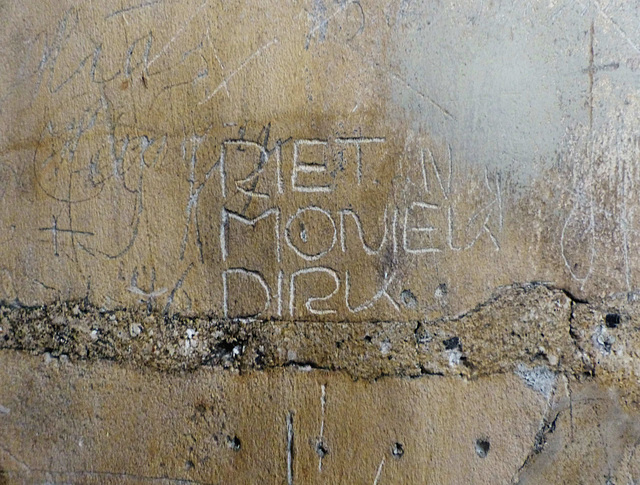Tongeren - Onze-Lieve-Vrouwebasiliek
you know who
industrial evening facade
Street Art (authorised) and two of the Cuatro Torr…
Metro de Madrid
shine on forever
I'm watching you
More interesting and well-executed street art, pos…
naturel
Reggio Emilia - Maggio 2018
burned
Roma è tutta così - HFF
Prince Albert pub
IMG 5067-001-Derelict
Always LAMB
Latteria Molloy
Street Art
Back Street View
Lisbon 2018 – Graffiti
Southsea Street Art
Southsea Street Art
L1060732
L1060733
L1060737
Relief Road 07
Litter
Lisbon 2018 – Not enough turism
POKE!!!!
boutique ressourserie
stadium event
Bougneau - Saint-Pierre
Bougneau - Saint-Pierre
Biron - Saint-Eutrope / Notre-Dame
Tvornica Papira Rijeka - 17
Tvornica Papira Rijeka - 4
Wall (31.05.2018)
Rolling shutter (29.05.2018)
city graff
HFF Everyone!
Ship graffiti - Great Chishill (Cambridgeshire)
Ship graffiti - Welbourn (Lincolnshire)
Ship graffiti - Hempstead near Holt (Norfolk)
Ship graffiti - Thornton Abbey & Gatehouse (North…
Ship graffiti - Thornton Abbey & Gatehouse (North…
Ship graffiti - Salthouse (Norfolk)
Ship graffiti - Folkingham (Lincolnshire)
Ship graffiti - Lincoln (Lincolnshire)
Ship graffiti - Welbourn (Lincolnshire)
Celebrating 150 years of death penalty abolition.
Celebrating 150 years of death penalty abolition.
Celebrating 150 years of death penalty abolition.
Brussels
Brussels
Brussels
Cologne - Südbrücke
London 2018 – End the war
Fuck Love !
Incubus
Yellow Zombie
Yellow Demon
kingston on thames church
More Southsea Street Art
More Southsea Street Art
Southsea Street Art
Southsea Street Art
Location
Lat, Lng:
Lat, Lng:
You can copy the above to your favourite mapping app.
Address: unknown
Lat, Lng:
You can copy the above to your favourite mapping app.
Address: unknown
See also...
Keywords
Authorizations, license
-
Visible by: Everyone -
All rights reserved
-
172 visits
Tongeren - Onze-Lieve-Vrouwebasiliek


Tongeren, founded 15BC under the name of "Aduatuca Tungrorum", is the oldest town in Belgium. The Romans set up a military camp, that was later abandoned, - but the settlement, that had grown around the camp developed into an important trading center near the Roman road linking Colonia Claudia Ara Agrippinensium (Cologne) to Bononia (Boulogne-sur-Mer). Though strongly fortified the Franks sacked the town in 275.
The Roman reign endet when the town got destroyed in 451 probably by the Huns. At that time a seat of a bishop existed here already. This see later moved on to Maastricht (595) and finally to Liege (718). In 881 Tongeren was raided and looted by the Normans. The largely destroyed city was rebuilt in the 10th century.
Tongeren prospered but in 1677 Louis XIV’s troops blew up the city walls and burned the town down. It took the town two centuries to recover from this.
Where the Onze-Lieve-Vrouwebasiliek stands now, was the bishopric see with Saint Maternus and Saint Servatius, the first bishops of the diocese founded here. In Carolingian times a collegiate convent existed and a pre-Romanesque church was erected, that later got replaced by a Romanesque structure. This church burned down during a war, fought by the prince-bishop of Liège, the Count of Loon, the Duke of Brabant and the French King.
Following the complete demolition of the burnt church, the construction of the large-scale gothic collegiate and town church began in 1240. It was completed in its present form in the 16th century.
The interior walls of the basilica are covered with graffiti. They may date from the time after the French Revolution, when the collegiate convent, that had existed here since Carolingian times, got dissolved. But some seem to be much younger.
The Roman reign endet when the town got destroyed in 451 probably by the Huns. At that time a seat of a bishop existed here already. This see later moved on to Maastricht (595) and finally to Liege (718). In 881 Tongeren was raided and looted by the Normans. The largely destroyed city was rebuilt in the 10th century.
Tongeren prospered but in 1677 Louis XIV’s troops blew up the city walls and burned the town down. It took the town two centuries to recover from this.
Where the Onze-Lieve-Vrouwebasiliek stands now, was the bishopric see with Saint Maternus and Saint Servatius, the first bishops of the diocese founded here. In Carolingian times a collegiate convent existed and a pre-Romanesque church was erected, that later got replaced by a Romanesque structure. This church burned down during a war, fought by the prince-bishop of Liège, the Count of Loon, the Duke of Brabant and the French King.
Following the complete demolition of the burnt church, the construction of the large-scale gothic collegiate and town church began in 1240. It was completed in its present form in the 16th century.
The interior walls of the basilica are covered with graffiti. They may date from the time after the French Revolution, when the collegiate convent, that had existed here since Carolingian times, got dissolved. But some seem to be much younger.
kiiti has particularly liked this photo
- Keyboard shortcuts:
Jump to top
RSS feed- Latest comments - Subscribe to the comment feeds of this photo
- ipernity © 2007-2024
- Help & Contact
|
Club news
|
About ipernity
|
History |
ipernity Club & Prices |
Guide of good conduct
Donate | Group guidelines | Privacy policy | Terms of use | Statutes | In memoria -
Facebook
Twitter

Sign-in to write a comment.